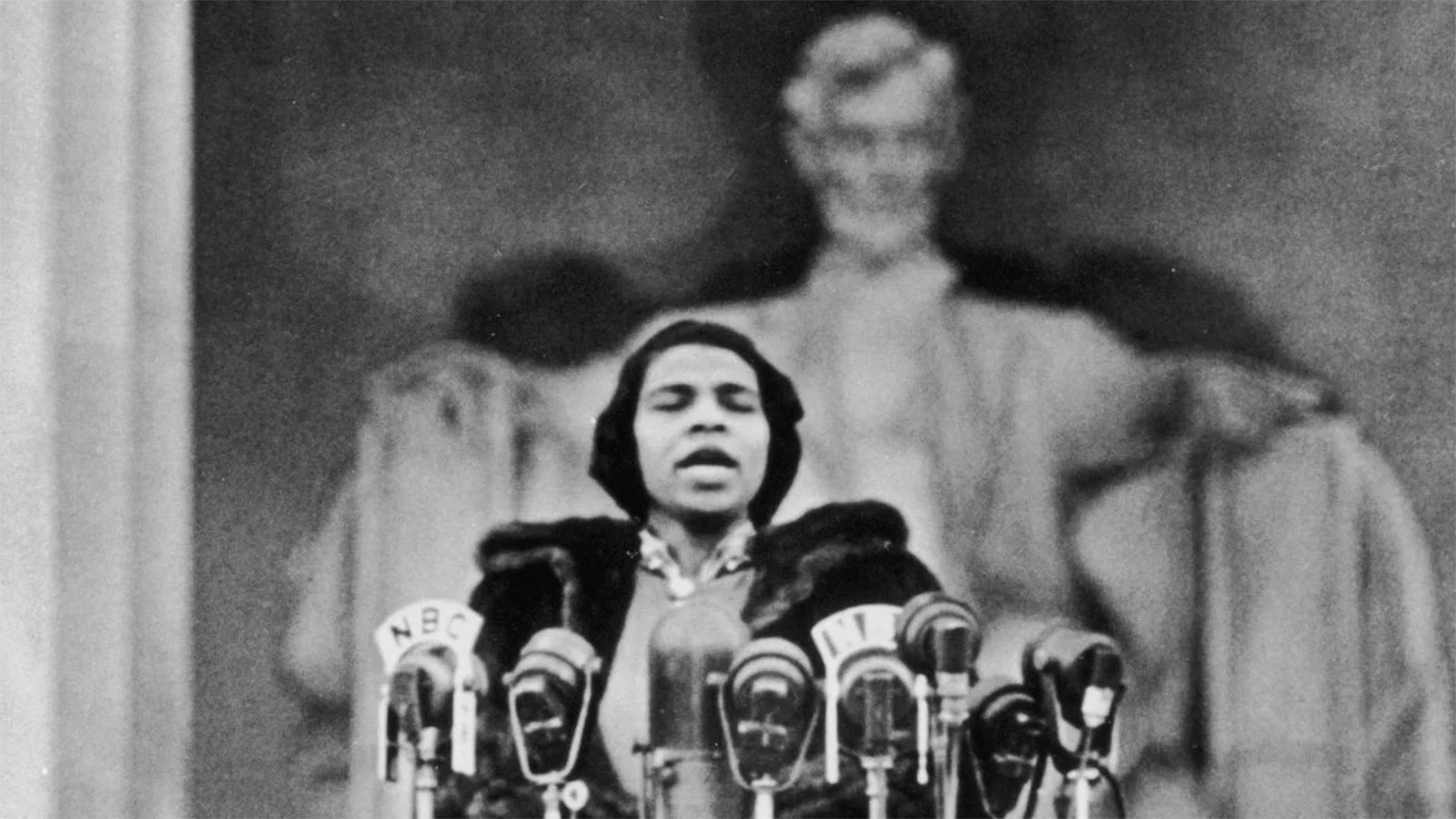
The Conclusion to my book-in-progress When the Arts Mattered: An Exhortation begins:
“No viewer could possibly glean the hypnotic impact of Marian Anderson from watching the 2022 public television documentary ‘The Whole World in Her Hands.’ Over the course of one hour and 53 minutes, she is rarely permitted to perform or speak for as long as a minute without some form of distraction – a photograph, a film, a voice-over advisory. When the moment comes for ‘My Country ‘Tis of Thee’ on the steps of the Lincoln Memorial – a mesmerizing newsreel clip – she sings for 17 seconds before a re-enacted commentary takes precedence (‘I as an individual was not important on that day – it happened to be the people I represented’), accompanied by an inter-racial gallery of American faces; the singing continues as a backdrop.
“A previous Marian Anderson documentary, produced by Kultur Films, is a little more lenient. But one has to go back 1957 – to Edward R. Murrow and ‘See It Now’ – to encounter a fundamentally different approach. Documenting Anderson’s recent tour of Asia, this 25-minute commercial TV show is sufficiently patient that one can engage in the moment. Her performance of ‘He’s Got the Whole World in his Hands’ unfolds gloriously, in four contrasting verses. And we feel privileged to see her sing a four-minute operatic aria with the fledgling Bombay City Symphony. No one feels impelled to inform us that Marian Anderson is a great artist.
“It would take a cognitive psychologist to adequately explore the pertinent costs of the soundbite mentality, now so ubiquitous that we do not even notice that our engagement with screens is necessarily superficial.”
Thanks to Naxos – a singular enterprise whose fearless sense of adventure is personified by its founder and ageless mastermind Klaus Heymann — my six “Dvorak’s Prophecy” documentary films are readily available via DVD or via the Naxos Video Library. They link to my book Dvorak’s Prophecy and the Vexed Fate of Black Classical Music. And – radically and tenaciously – they reject the soundbite template.
A new mega-review of the book and the films, by Mark N. Grant in The American Scholar, says it all:
“Can anything be done to effect a rapprochement between the old and the new paradigms so that the heritage of classical music can be revivified for younger generations? One possible answer is being suggested by the scholar and critic Joseph Horowitz in his new book Dvořák’s Prophecy and the Vexed Fate of Black Classical Music. Horowitz seems to say that it’s not necessary to topple canonical classical music idols as if they were the Buddhas of Bamiyan, because a rich parallel heritage of African-American classical music has been hiding in plain sight all along. He has assumed the role of a skilled art conservator who is cleaning up an old master, removing an overlayer to disclose a pentimento: an underlayer that is a veritable classical music 1619 project. And at the same time, in a series of six companion videos that he narrates (Dvořák’s Prophecy: A New Narrative for American Classical Music, produced by Naxos), Horowitz goes a good way toward remediating the problematic aspects of media literacy, sound-bite epistemology, Snapchat concentration spans, and ahistorical narcissism that bedevil our culture today.
“Horowitz also argues that the primary champion and practitioner of Native American–based art music, the white Anglo-American composer Arthur Farwell, has not only been unfairly neglected, but is also still vexed by the charge of cultural appropriation. These and other questions are teased out both in his book and in the accompanying six videos, which focus on Dvořák, Ives, Black composers, Bernard Herrmann, Lou Harrison, and Copland, respectively. As a group, these videos (along with a CD of Farwell’s music) sweep together a vast canvas of . . . Americana . . . All are interestingly told. The video documentaries eschew the Ken Burns style of rapid montage and instead go into deep focus. Talking heads speak at length rather than in sound bites. The music on the soundtracks, performed by the Washington, D.C.–based PostClassical Ensemble (of which Horowitz is executive director) and conducted by Angel Gil-Ordóñez, is not interrupted by hyperkinetic visual montages or multiple voiceovers. It’s the documentary equivalent of “slow food”; there is room to absorb and think and remember. . . .
“The videos are fascinating and should be widely purchased and used by educators and institutions throughout the country to proselytize the unconverted. If classical music is going to survive and thrive, we need zealous advocates like Joseph Horowitz to continue beating the drum.”
To sample (and purchase) the six “Dvorak’s Prophecy” films – and strike a blow against soundbite reductionism — click here.

Leave a Reply